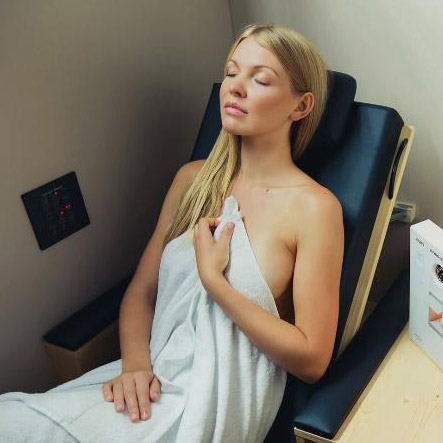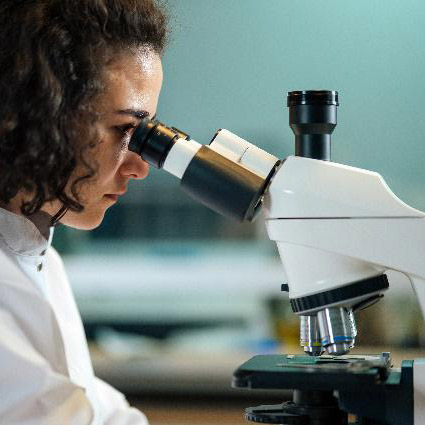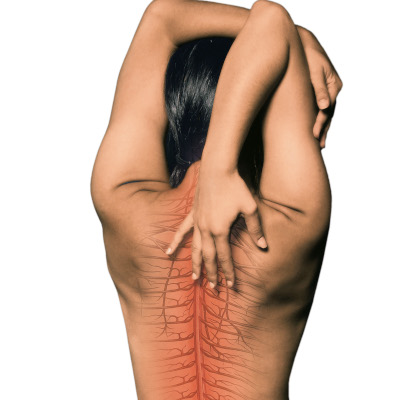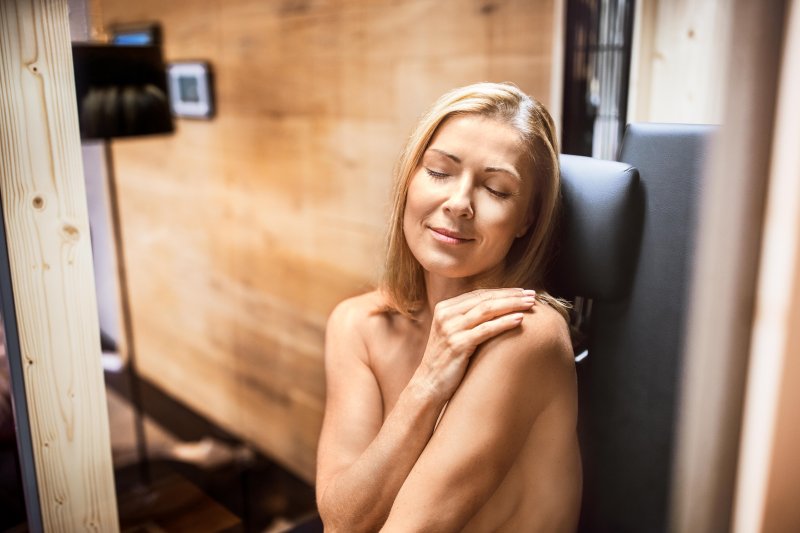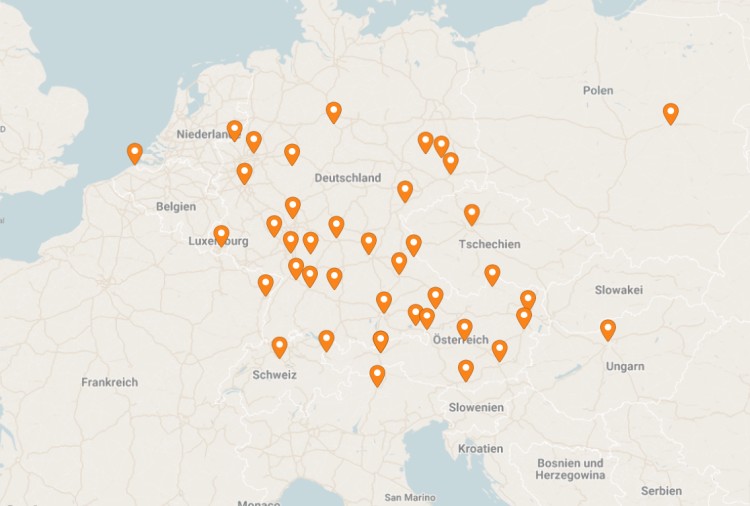The magic of infrared radiation
How it works and what it can do
Forget everything you have heard so far about infrared. Whe who reads the word infrared may of extinct mobile phonemodels , infrared, the W-LAN of the old generation. But the association is deceptive.gt; Although the times for mobile phones equipped with infrared have been eternally for our cabins are still a long way off.. Here is it is exactlywhat creates aa pleasant moment of relaxation . Infrared is one of the top technologies when it comes to heat and health. The red light is good for you: its warmth provides the skin with the blood circulation that the body needs, accelerates healing processes and relaxes the entire organism. the entire organism.
We all know the latter from the cosy Son Sundaywalk or or a spontaneous ice cream when the weather is nice. The The sun is naturally endowed with infrared light, which ishich which creates the feeling of warmth on our skin. A full 42% of sunlight is infrared, but it is well known that we should not use too much of it. of it too much of it. Why this is so, what IR light does to us and how and how we use it in our cabins, will be explained in this article.
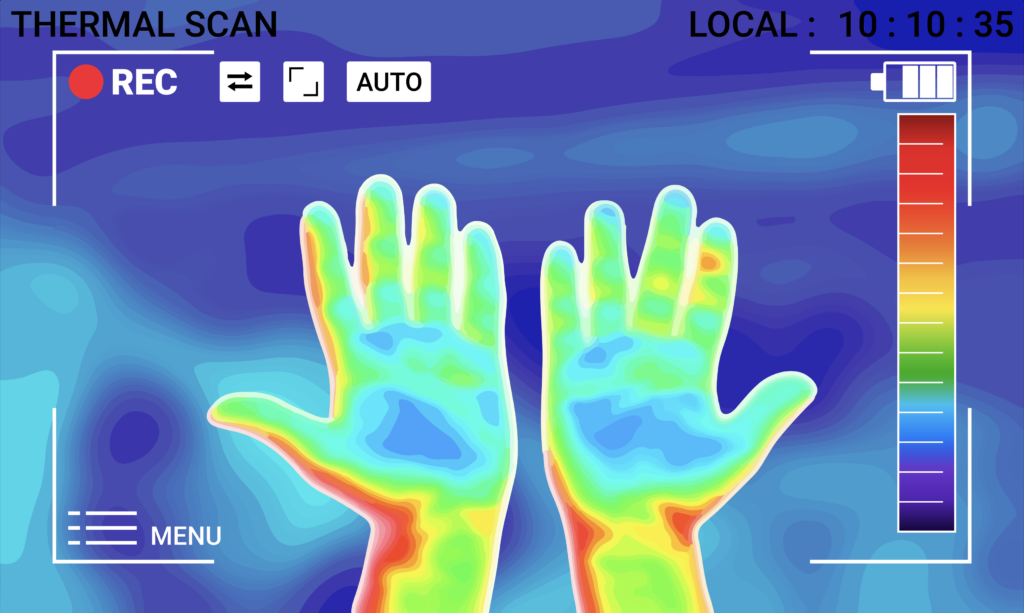
Infrared - the origin of all life
Translated, the prefix, which comes from Latin, means infra means "below". The term infrared can therefore be used to to a range, which is - – or at - – the red end of the light spectrum. Sounds a bit strange at first, but it's not: we encounter infrared radiation every moment in our everyday lives. Whether from the sun, den the radiant heater in the outdoor area of a café or also us ourselves: All that and also we g IR radiation. Thus, infrared light is something quite natural and nothing to be afraid of because you don't always see it. As already mentioned, infrared makes up a large part of sunlight of sunlight, which which can be divided into three categories: Infrared-A, -B and -C. The latter is filtered through our atmosphere and we need the other two to live. The three types of light differ in their spectrum. What does this mean? The spectrum refers to the wavelength in which the infrared radiates. Overall, the light ranges between 780 and one million nanometres. We cannot see this radiation, but we can feel it. The shorter the wavelength of the light, the more intense it is. For example, infrared A: we can feel this radiation best in winter, when it is very cold but the sun shines on us. it is very cold, but the sun nevertheless conjures up warmth in our faces on sky-blue days. .
In high mountain regions, you can certainly sit in the sun sit in the sun in a T-shirt or at the après-ski enjoy a drink with spring fever. It is precisely this light that we call deep heat, because it has an effect right into the subcutaneous tissue. It is also interesting to note that infrared in itself is not warming, i.e. the independent function of which but only transports the heat. This ensures that the important heat defence mechanisms of the skin are impaired as little as possible. Nevertheless, it should be said that, as with everything in life, infrared heat should only be enjoyed in moderation. Too much of a good thing can lead to burns to the tissue Our eye tissue in particular is very sensitive. For this reason, protective caps for the eyes are often provided in solariums, for example, if you want to sunbathe. We at Physiotherm have something developed something for you, to the delicate tissue to protectwith us we call it SENSOcare ®.
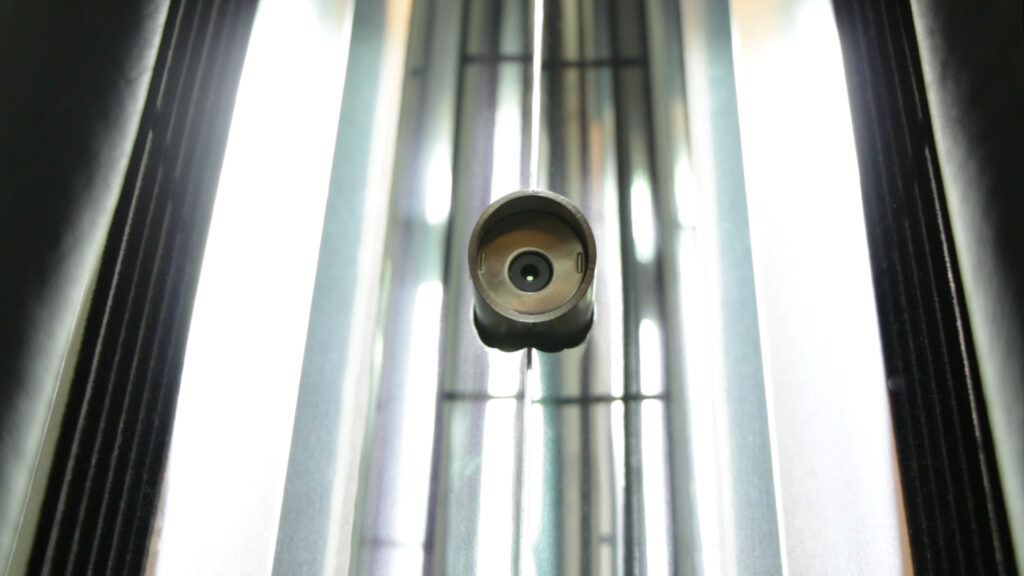
Infrared at Physiotherm - how we get the most out of radiation & protect with SENSOcare ®.
IR radiation transfers heat to the skin without contact. As long as the irradiation limits are observed, it is easy to regulate and can provide both warming and healthy moments. In this way, the infrared light can adapt to the heat absorption capacity of the skin without causing significant damage. The skin's own temperature must not exceed 43 degrees Celsius. When the infrared rays reach the skin, they are converted into heat by the uppermost skin layers - the epidermis and dermis. This is also where the infrared light stops and the body's own process begins: by heating, the body increases the blood flow in the skin to cool it down. Heat can only be transported into the body's circulation by blood, so we can achieve a deep effect in the end.
To ensure that this process can be carried out successfully and with the best feeling, without causing any damage, the Physiotherm cabins feature SENSOcare ®. With this technical achievement, our medical-scientific department was able to develop the first IR technology in which the infrared intensity automatically adapts to the needs of the body. In other words, if you are sitting in one of our cabins and, for example, your skin is heading towards 43 degrees Celsius, the radiator in the cabin is intelligent enough to downgrade its radiation and adjust accordingly. An automatic protection for their largest organ. This technology is not only a milestone in infrared cabins, but should also be considered on an overall health level. Because we at Physiotherm have always understood how important it is to bring health and wellness into harmony and unison.
